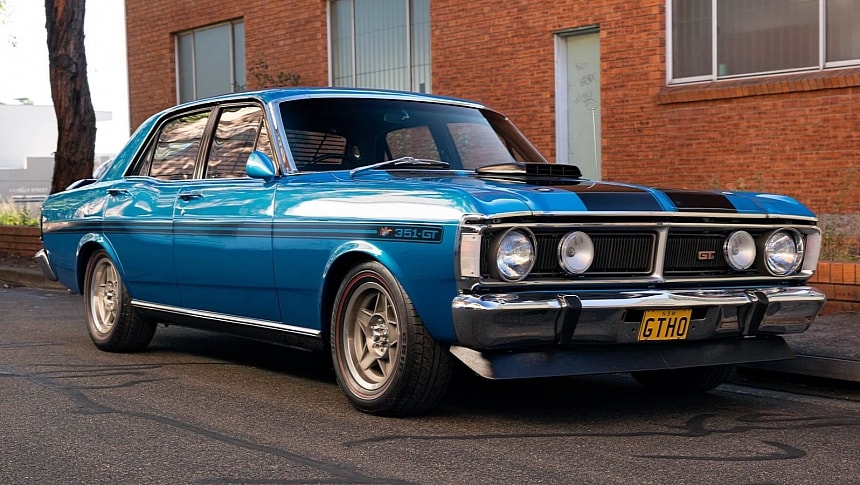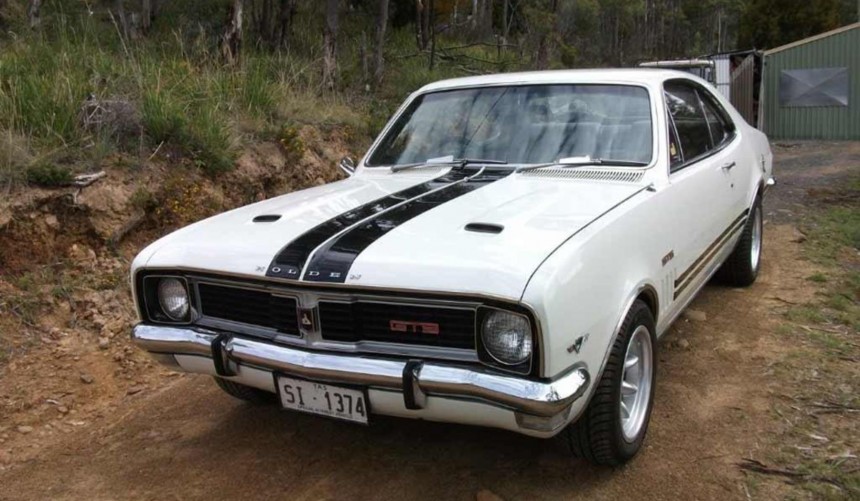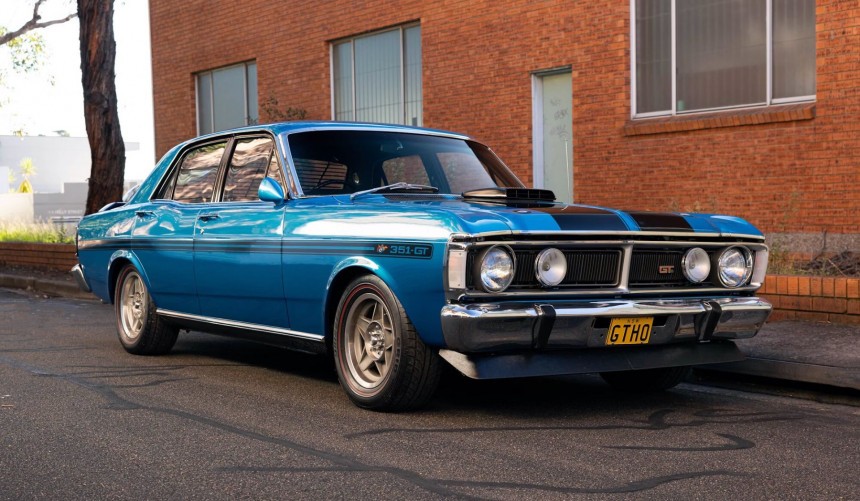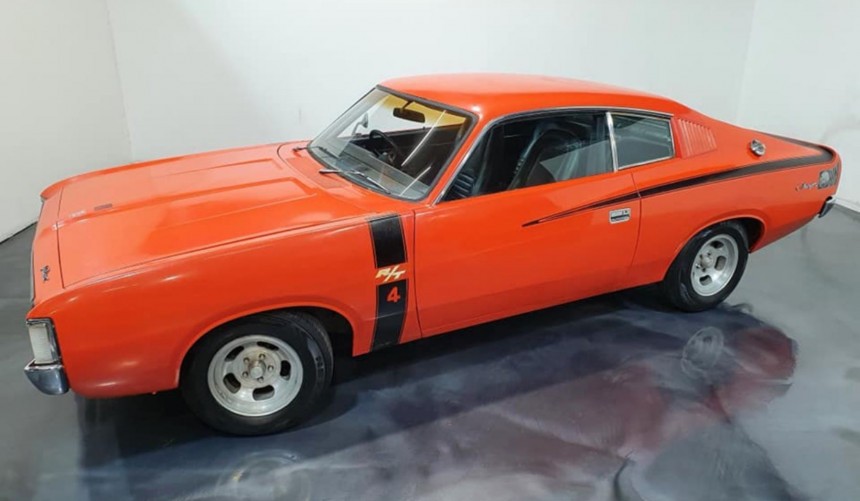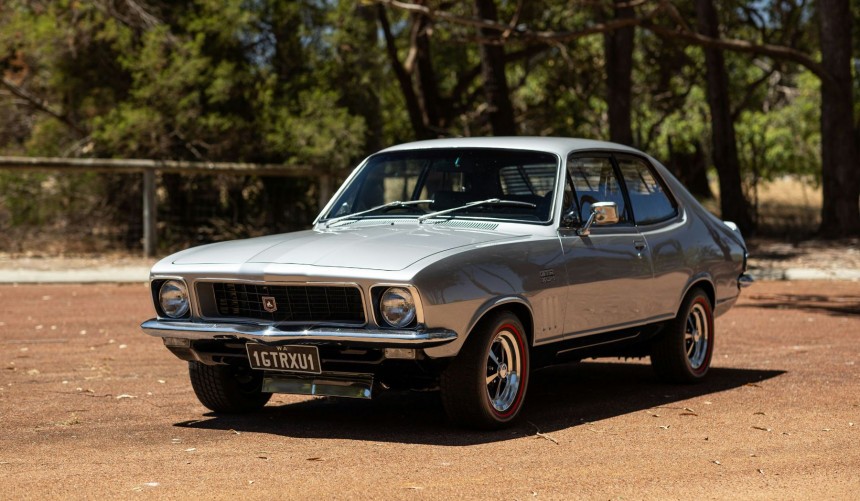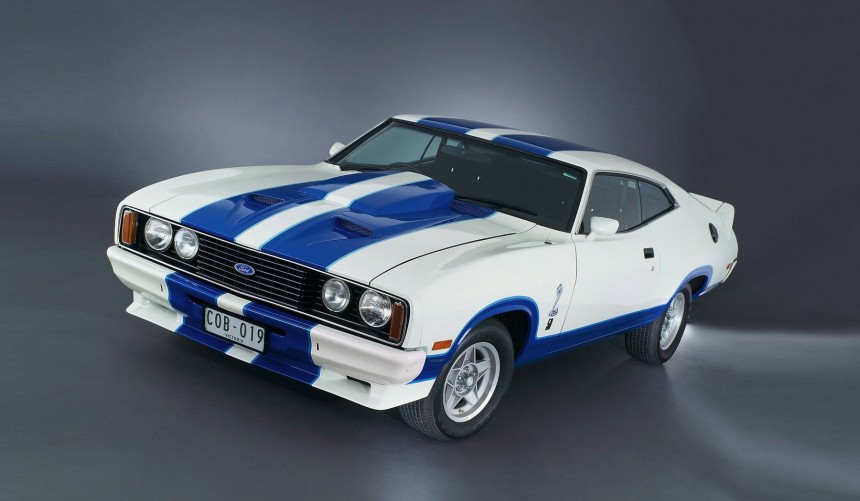Though some purists insist that a vehicle that wasn't built in the US can't be an authentic muscle car, these five classics from Down Under will prove them wrong.
Since the mid-1950s, America's biggest carmakers were engaged in a battle for horsepower supremacy.
Once Pontiac introduced the hugely popular GTO package for its Tempest/LeMans lineup, that battle turned into an all-out war that produced some legendary high-performance versions of otherwise mundane cars.
By the late 1960s, the muscle car craze also reached Australian shores, leading to some epic locally-developed muscle cars that, in some cases, were just as outrageous as their American counterparts.
Introduced in 1969, the first-gen Holden Monaro was a two-door pillarless hardtop powered by a basic straight-six in standard guise.
Similar in size to the Chevy II/Nova, the Monaro lineup also included performance versions, the most potent of which had homologation special status.
While in the US, most muscle cars were developed for either the drag strip, NASCAR, or the Trans-Am, in Australia, they were built to homologate production models for the nation's Touring Car Championship.
Launched in mid-1969 and based on the facelifted HT Monaro, the GTS 350 was the latest development of the fierce rivalry between Holden and Ford for Australian Touring Car Championship (ATCC) supremacy.
Powered by a 350-ci (5.7-liter) Chevy small-block V8 rated at 350 hp, the GTS 350 was the most potent production car ever marketed by Holden at the time of its introduction.
Moreover, since it was capable of running the quarter mile in the mid-to-high 14-second range, it was also one of the fastest Australian cars of its era.
Long before Dodge redefined muscle cars with its four-door, Hellcat-powered Charger, Ford's Aussie branch unleashed what still is one of the most epic high-performance rides in the history of the Australian automotive industry.
Another result of the Holden vs. Ford rivalry for the ATCC crown, the GT-HO Phase III was a homologation special built throughout the 1971 model year.
Based on the standard Dalcon XY GT, it received numerous upgrades, including a heavy-duty suspension, a larger fuel tank, and bigger brakes.
Power came from a 351-ci (5.7-liter) Cleveland V8 coupled to a four-speed Toploader manual and a 9-inch rear end.
With 300 hp on tap, the GT-HO Phase III was believed to be the fastest production sedan at the time of its release. It could accelerate from 0 to 62 mph (100 kph) in 6.4 seconds and run the quarter mile in 14.4 seconds.
During the early 1970s, American buyers who wanted a cheap car to take them from point A to point B could get something like the Plymouth Valiant, whereas Mopar fanatics chose either a high-performance version of the Barracuda, Dodge Charger or the compact Valiant-based Duster 340.
In Australia, the aforementioned muscle cars were not available, but local Mopar fans could get the most outrageous Valiant ever built - with an iconic American nameplate.
Based on the plebian Valiant, which was marketed as a Chrysler in Australia, the high-performance version dubbed Charger R/T reached its pinnacle in terms of power in 1972 when the E49 package was introduced.
Another ATCC homologation special, the Valiant Charger R/T E49, received numerous upgrades over the standard version, but unlike all other entries on this list, it wasn't powered by a V8.
Instead, it received a special version of the 265-ci (4.3-liter) Hemi-6 inline-six capable of 302 hp.
Lighter than older V8-powered Australian muscle cars but just as powerful, the E49 could sprint to 60 mph (97 kph) from a standstill in 6.1 seconds and achieve a 14.1-second quarter-mile time.
Introduced in the spring of 1967, the Holden Torana was a plebian people mover based on the HB Viva.
However, by 1970, it shook off that mantra thanks to an epic collaboration between Holden Cars and Harry Firth's Holden Dealer Team - the manufacturer's semi-official factory racing team.
The result was the most successful touring and rally car ever built in Australia, but also a street-legal, homologation special that became an Aussie muscle car legend.
The second GTR XU-1, after the LC-based version, the LJ Torana GTR XU-1, was introduced in 1972.
Smaller but also lighter than traditional V8-powered Aussie muscle cars, the high-performance model was powered by a thoroughly upgraded, race-bred 202-ci (3.0-liter) inline-six equipped with a trio of Zenith-Stromberg carbs, a hot cam, and a larger-diameter exhaust that helped it deliver 190 hp.
Despite this somewhat low output figure, especially compared to American muscle cars, the lightweight LJ Torana GTR XU-1 was still capable of a 7.5-second 0-to-60 mph (97 kph) sprint and a 15.9 quarter-mile run.
In the US, the impressive high-performance tire shredders were extinct by 1978.
While the Mustang was now a Pinto-based econocar and the Torino GT was history, in Australia, Ford released an exciting muscle car that oozed Shelby vibes.
Based on the Falcon XC Hardtop, the Cobra received a bespoke Sno-White paint with blue Le Mans-style twin stripes and a series of aesthetic upgrades that made it look far more aggressive than its standard counterpart.
Under the hood, it hid either the 351-ci (first 200 cars) or the 302-ci (last 200) Cleveland V8, capable of 217 and 202 hp (SAE net), respectively.
Far cooler and more potent than the performance-looking, US-built Mustang King Cobra could run the quarter mile in the low-17-second range. While that wasn't particularly impressive, especially when compared to earlier Aussie muscle cars, by 1978 standards, it was more than adequate for a performance-oriented ride.
Once Pontiac introduced the hugely popular GTO package for its Tempest/LeMans lineup, that battle turned into an all-out war that produced some legendary high-performance versions of otherwise mundane cars.
By the late 1960s, the muscle car craze also reached Australian shores, leading to some epic locally-developed muscle cars that, in some cases, were just as outrageous as their American counterparts.
1969 Holden HT Monaro GTS 350
Similar in size to the Chevy II/Nova, the Monaro lineup also included performance versions, the most potent of which had homologation special status.
While in the US, most muscle cars were developed for either the drag strip, NASCAR, or the Trans-Am, in Australia, they were built to homologate production models for the nation's Touring Car Championship.
Launched in mid-1969 and based on the facelifted HT Monaro, the GTS 350 was the latest development of the fierce rivalry between Holden and Ford for Australian Touring Car Championship (ATCC) supremacy.
Powered by a 350-ci (5.7-liter) Chevy small-block V8 rated at 350 hp, the GTS 350 was the most potent production car ever marketed by Holden at the time of its introduction.
Moreover, since it was capable of running the quarter mile in the mid-to-high 14-second range, it was also one of the fastest Australian cars of its era.
1971 Ford Falcon XY GT-HO Phase III
Another result of the Holden vs. Ford rivalry for the ATCC crown, the GT-HO Phase III was a homologation special built throughout the 1971 model year.
Based on the standard Dalcon XY GT, it received numerous upgrades, including a heavy-duty suspension, a larger fuel tank, and bigger brakes.
Power came from a 351-ci (5.7-liter) Cleveland V8 coupled to a four-speed Toploader manual and a 9-inch rear end.
With 300 hp on tap, the GT-HO Phase III was believed to be the fastest production sedan at the time of its release. It could accelerate from 0 to 62 mph (100 kph) in 6.4 seconds and run the quarter mile in 14.4 seconds.
1972 Chrysler Valiant Charger R/T E49
In Australia, the aforementioned muscle cars were not available, but local Mopar fans could get the most outrageous Valiant ever built - with an iconic American nameplate.
Based on the plebian Valiant, which was marketed as a Chrysler in Australia, the high-performance version dubbed Charger R/T reached its pinnacle in terms of power in 1972 when the E49 package was introduced.
Another ATCC homologation special, the Valiant Charger R/T E49, received numerous upgrades over the standard version, but unlike all other entries on this list, it wasn't powered by a V8.
Instead, it received a special version of the 265-ci (4.3-liter) Hemi-6 inline-six capable of 302 hp.
Lighter than older V8-powered Australian muscle cars but just as powerful, the E49 could sprint to 60 mph (97 kph) from a standstill in 6.1 seconds and achieve a 14.1-second quarter-mile time.
1972 Holden LJ Torana GTR XU-1
However, by 1970, it shook off that mantra thanks to an epic collaboration between Holden Cars and Harry Firth's Holden Dealer Team - the manufacturer's semi-official factory racing team.
The result was the most successful touring and rally car ever built in Australia, but also a street-legal, homologation special that became an Aussie muscle car legend.
The second GTR XU-1, after the LC-based version, the LJ Torana GTR XU-1, was introduced in 1972.
Smaller but also lighter than traditional V8-powered Aussie muscle cars, the high-performance model was powered by a thoroughly upgraded, race-bred 202-ci (3.0-liter) inline-six equipped with a trio of Zenith-Stromberg carbs, a hot cam, and a larger-diameter exhaust that helped it deliver 190 hp.
Despite this somewhat low output figure, especially compared to American muscle cars, the lightweight LJ Torana GTR XU-1 was still capable of a 7.5-second 0-to-60 mph (97 kph) sprint and a 15.9 quarter-mile run.
1978 Ford Falcon Cobra
While the Mustang was now a Pinto-based econocar and the Torino GT was history, in Australia, Ford released an exciting muscle car that oozed Shelby vibes.
Based on the Falcon XC Hardtop, the Cobra received a bespoke Sno-White paint with blue Le Mans-style twin stripes and a series of aesthetic upgrades that made it look far more aggressive than its standard counterpart.
Under the hood, it hid either the 351-ci (first 200 cars) or the 302-ci (last 200) Cleveland V8, capable of 217 and 202 hp (SAE net), respectively.
Far cooler and more potent than the performance-looking, US-built Mustang King Cobra could run the quarter mile in the low-17-second range. While that wasn't particularly impressive, especially when compared to earlier Aussie muscle cars, by 1978 standards, it was more than adequate for a performance-oriented ride.
